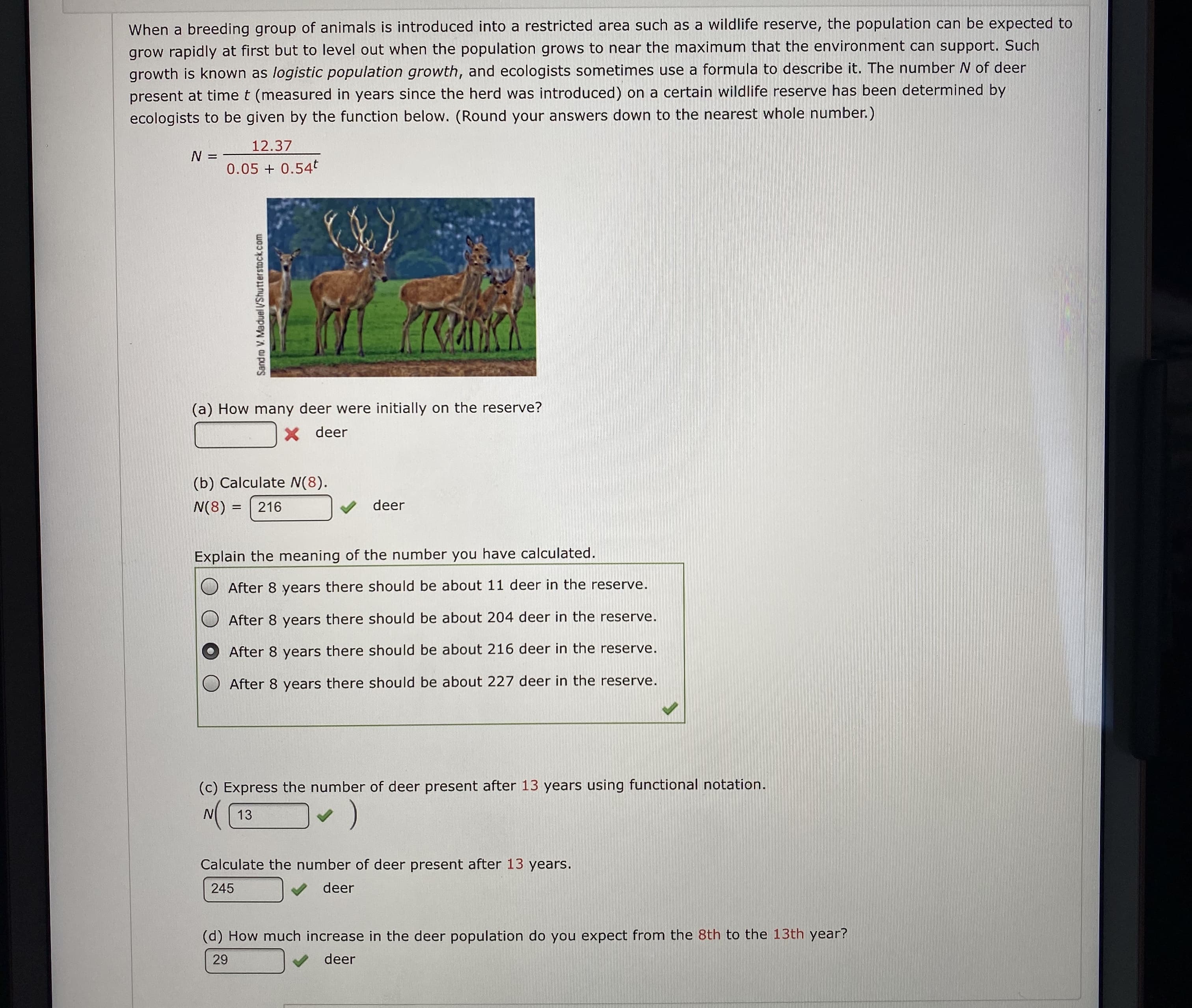When a breeding group of animals is introduced into a restricted area such as a wildlife reserve, the population can be expected to grow rapidly at first but to level out when the population grows to near the maximum that the environment can support. Such growth is known as logistic population growth, and ecologists sometimes use a formula to describe it. The number N of deer present at time t (measured in years since the herd was introduced) on a certain wildlife reserve has been determined by ecologists to be given by the function below. (Round your answers down to the nearest whole number.) 12.37 N = 0.05 + 0.54t (a) How many deer were initially on the reserve? X deer (b) Calculate N(8). V deer N(8) = 216 Explain the meaning of the number you have calculated. After 8 years there should be about 11 deer in the reserve. After 8 years there should be about 204 deer in the reserve. After 8 years there should be about 216 deer in the reserve. O After 8 years there should be about 227 deer in the reserve. (c) Express the number of deer present after 13 years using functional notation. (. N 13 Calculate the number of deer present after 13 years. deer 245 (d) How much increase in the deer population do you expect from the 8th to the 13th year? deer 29 Sand ro V. Maduel VShutterstock.com
Percentage
A percentage is a number indicated as a fraction of 100. It is a dimensionless number often expressed using the symbol %.
Algebraic Expressions
In mathematics, an algebraic expression consists of constant(s), variable(s), and mathematical operators. It is made up of terms.
Numbers
Numbers are some measures used for counting. They can be compared one with another to know its position in the number line and determine which one is greater or lesser than the other.
Subtraction
Before we begin to understand the subtraction of algebraic expressions, we need to list out a few things that form the basis of algebra.
Addition
Before we begin to understand the addition of algebraic expressions, we need to list out a few things that form the basis of algebra.
What are the blanks?

Trending now
This is a popular solution!
Step by step
Solved in 6 steps with 4 images








